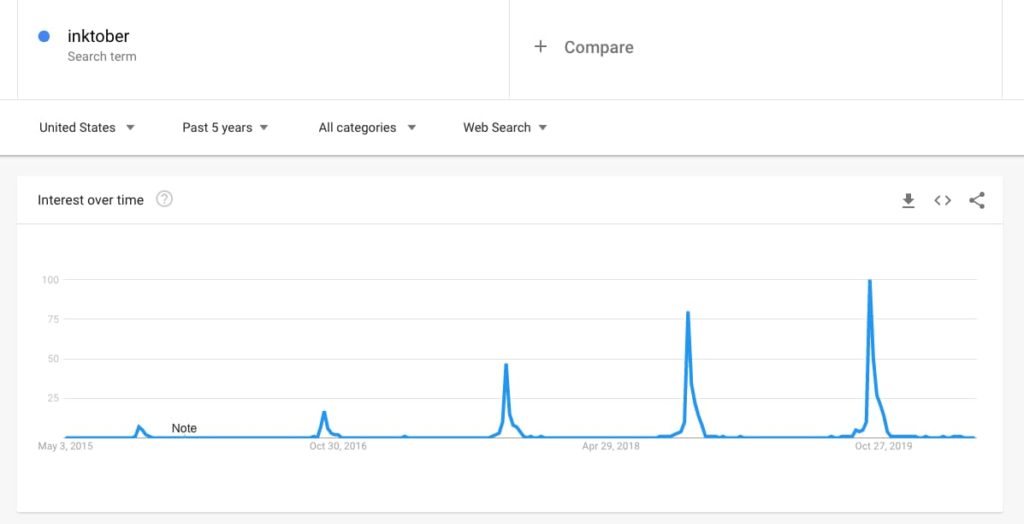 Posted by Aimee Cozza on April 30th, 2020
Posted by Aimee Cozza on April 30th, 2020While we’ve certainly talked plenty about why blogging can benefit your business, why you should use broad topics, and how to structure a blog post, one thing we haven’t really touched upon how to determine what topics to write a blog post about. In this post, we’ll go over some places you can generate blog topics, and how those blog topics will work for you.
Step 1: Determine what your core topics are
Core topics are things that are directly related to your business. For example, if you’re a landscaper, a core topic may be a landscaping project you are working on, complete with photos. A core topic also includes some level of self-promotion, but doesn’t go overboard (most people don’t like reading sales-pitchy blog posts). For us, our core topics would be anything related to our services, but because our services are far reaching, we have a lot of potential topics. Core topics will help you determine some good ideas you can use to show people what you’re doing, what direction you’re moving in, and what you’re offering.
Step 2: Determine secondary topics

Secondary topics will be related to your services and products, but may not be as closely related as promoting the service or product itself. For example, a secondary topic for hasOptimization may be what kind of WordPress plugins work best for certain solutions. We work with WordPress plugins almost every single day, and we have some know how in the space, but we don’t sell WordPress plugins, so this is slightly more removed from our core topic. These topics will help people find usefulness in your words, and show off your expertise in your area in the process.
Step 3: Determine tertiary topics
Tertiary topics are most far removed from your core topics, but can help further cement your particular level of knowledge and expertise. A tertiary topic can also bridge a gap of knowledge on the internet. For example, a tertiary topic for hasOptimization was how to set up a Google Beacon. We don’t offer Google Beacon services, and we don’t set them up for clients, but we noticed there was a suspicious lack of information on the internet regarding Google Beacon, so we wrote a blog post to bridge that gap, and guess what? We were are the #1 result (under Google and rich snippets) for how to set up a Google Beacon.
Step 4: What are your customers asking about?
Do customers ask a lot of questions about a product or service? Do you hear a recurring question about something related to your business constantly? Perhaps social media is unclear about something that you could lend expertise about? Write a blog post about it! For example, I am continually seeing people ask how to determine topics for writing blog posts, so here I am, writing a blog post to answer that question!
Step 5: What’s happening in the world?
There is something to be said about timing. If your particular business has something happening right now that is being Googled about or asked about, you’ll want to cover that topic now rather than later. For example, searches for a popular artist challenge called Inktober surge come October-November (when Inktober takes place), so you’ll want to post during that time to hopefully bring in some of that sweet, sweet search traffic. Topics like this one can gain traction over time as well, so being attuned to what is happening around you in relation to your business is important.

Step 6: What other topics can I cover?
Here are some fill in the blank ideas that can help you determine what to write about:
- How do I…
- 3 ways you can…
- What do I do if…
- How much does it cost to…
- Product review
- Introducing the latest in…
- What we know so far about…
- What you should know about…
- 4 reasons why you shouldn’t…
- Debunking…
Step 7: Now what?
If you’re absolutely tapped out on things to write about from your own mind, take a look at what other people are writing about. You may want to look at competitor sites and write down topics that you can “borrow” to write about. Never copy your competitor’s blog posts. You certainly don’t want a duplication penalty or worse, a copyright infringement case on your hand, but you can certainly borrow the topic or ideas contained within, and offering a link back will help too.
You can check other sources like the news, magazines, and newspapers to determine some more areas of topics you can touch upon. Social media is another great source for topics, though timeliness is often important with these pieces of information.
Step 8: Hire a professional
If you’re finding you just don’t have the time to write enough in a blog about your business or related topics, it may be time to look into hiring a professional. A professional can ghostwrite content under your name that will lend more legitimacy and credibility to your business, and help you grow your page views and, in turn, your customer base. If you need help with blogging, contact us today! We offer blogging services as well as other content creation services, and we’d love to work with you.
Have a question about blog topic generation? Let us know in the comments below!




